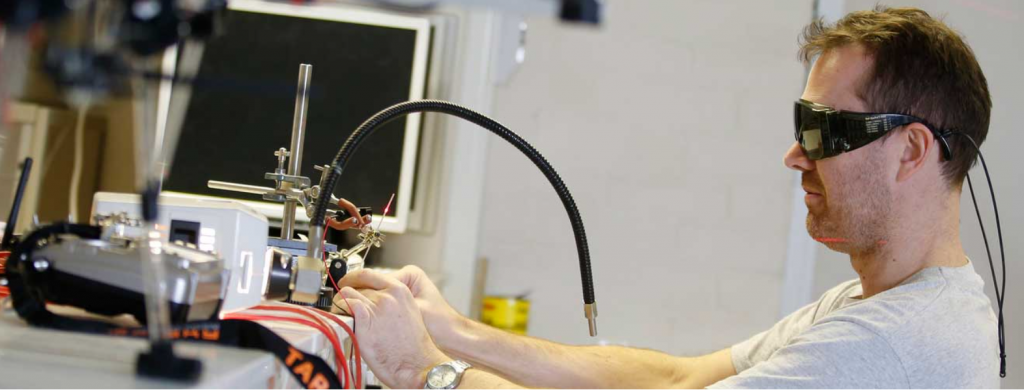Air pollution shortens the lives of some 40,000 people in the UK each year. Low-cost, highly accurate technology developed by the University’s researchers to monitor air quality at Heathrow Airport is now helping to tackle this urgent problem in more than 60 countries worldwide.
“We know from the World Health Organisation that 88% of deaths related to outdoor pollution occur in low- and middle-income countries. Yet it is these same developing countries that typically lack access to data on their air quality. UNEP’s device can spark a data boom to help countries reduce the negative effects of air pollution, potentially saving lives that would have been lost due to air pollution-related illnesses.”
Growing concern over levels of pollution at Heathrow Airport led to a collaborative research project between the University’s Particle Instruments Research Group, then led by Professor Paul Kaye, and atmospheric chemists from three other universities.
The Heathrow SNAQ (Sensor Networks for Air Quality) project needed to install sensor nodes across take-off and landing zones and the airport’s perimeter to monitor pollutant gases and particulates – the microscopic airborne particles that are a major component of air pollution – over 15 months.
While the nodes could use low-cost electrochemical sensors for the pollutant gases, there was no equivalent affordable solution for the continuous monitoring of particulates. The available optical particle counter (OPC) instruments were not only too expensive, but required access for routine maintenance, which the airport authorities would not accept.
The Hertfordshire team had previously developed low-cost balloon-borne OPCs to study atmospheric Saharan dust, a key driver of weather patterns over Europe. These were cheap enough for the Heathrow project but contained an air-pump with a particle filter which needed changing regularly, and by hand.
Ground-breaking design
Professor Kaye and his colleagues set about researching a completely new type of OPC that could operate without a pump or filter, but which could still achieve the accuracy of individual particle counting and sizing offered by far more expensive commercially available OPC instruments.
“Our approach involved optical and aerodynamic modelling of various designs. The new type of OPC had to be simple, accurate, reliable and easy to make.”
Professor Paul Kaye,
Professor of Atmospheric Physics
Building on lessons learned from the ‘Saharan dust’ OPCs and using newly available 3D rapid prototyping machines funded by the University, the Group came up with a pump-less, ‘virtual sensing zone’ OPC design that could either use naturally occurring air currents or a small, low-cost electrical fan to sample the airborne particles.
The University’s ground-breaking design was taken up by Essex-based company Alphasense, which had provided the gas sensors in the successful Heathrow SNAQ project. With assistance from the University’s researchers, Alphasense produced the OPC-N2, a commercial variant of the ‘Heathrow’ particle sensors, which quickly sold to more than 20 countries worldwide.
Beyond the UK, the OPC-N2 has been adopted by the United Nations Environment Programme for its air quality monitoring networks across major cities within developing countries. The pilot network scheme focused on Nairobi, with a further 30 cities targeted in Africa and beyond.
To date, the OPC-N2 has been sold in more than 60 countries, including China, the USA, Japan, Germany, France, Spain, India, Peru, Taiwan, Vietnam, Australia and New Zealand. In many cases, developers and researchers are using the unique capabilities of the OPC-N2 to gather high-resolution air quality data with which to inform new clean air strategies – helping to make our cities healthier, safer places in which to live.




